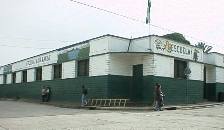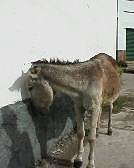

Siguatepeque, Honduras
September 1999
Siguatepeque is a city of about 45,000 people. Located in the Central Highlands of Honduras, the climate is considerably more temperate than the coastal area and lower elevations. ENASIFOR, the Honduran National Forestry School is located here. The city is midway between San Pedro Sula on the Caribbean coast and Tegucigalpa, the capital city. The cheapest way to travel to Siguatepeque is by bus.The current fare for three people from Tegucigalpa to Siguatepeque on the commuter bus was 45 Lempira (15 Lempira each). That converts to a little less than $3.25 (at the September 1999 exchange rates) for a 75 mile bus ride We stayed at the Hotel Pan Americano. The cost for a room for three people (including cable TV and air conditioner) was about $15 per night. You can deduct $5 a night if you decide to forego the A/C. The front desk has bottled water and soft drinks available. Although there is no coffee shop in the hotel, there are several places to eat with in a 5 minute walk of the hotel. The corridor outside our room offered a view of the city. In the distance is the church, the tan building immediately in front of it is the city hall |

|  |
| The buildings in Siguatepeque are a lot less architecturally interesting than in Tegucigalpa. This is seen in the simplicity of the church. It is a rather plain and basic church building. The church has a small garden with a variety of roses as well as more traditional semi-tropical plants like hibiscus. |
| One of several schools is near the church and city hall. All students wear uniforms and each school has a different uniform. Morning assembly was often on the street to the left of the building. While we were in town, the student were practicing their marching for the Independence Day parade in town. Most of the school "bands" are composed of drums and glockenspiels only. Occasionally there may be a trumpet or two. |  |
| Livestock in the street is quite common as only the central portion of town is paved. Ox carts, burros and horses are all still used for hauling supplies. This is a delivery of dried beans. Cattle, burros, and horses wander about. "Vegetation management" is accomplished by men with machetes or the livestock. While out for a walk one evening, we came across a stallion and his band of mares in the city park grazing on the grass there. We also came across this camera shy burro one morning. He was around the corner from the school. |
 |
 |
| La Villa Mexicana* is a little place for American and Mexican style meals (done Honduran style of course). This small is restaurant owned and operated by a Honduran woman and her American husband. The restaurant is across from the city hall. Out on the main highway between San Pedro Sula and Tegucigalpa is La Granja D'Elia. This is a combination grocery store and buffet. The vegetable are excellent quality.(all are grown by Mr. D'Elia on his farm). The buffet was quite nice. Another popular restaurant in town is Pizzeria Venezia**. Both are within walking distance of the hotels in the city center area. * La Villa Mexicana was sold in 2004 and the name changed to Iguana Mia. The new owners have retained much of the original menu plus added more American syle specialties. Sanitation is to American standards. **Personal opinion - the branch of Pizzeria Venezia located on CA-5 (the highway between San Pedro Sula and Tegucigalpa has much better pizza. There is also an expanded menu of pasta dishes, wines, beef and chicken entrees. |
